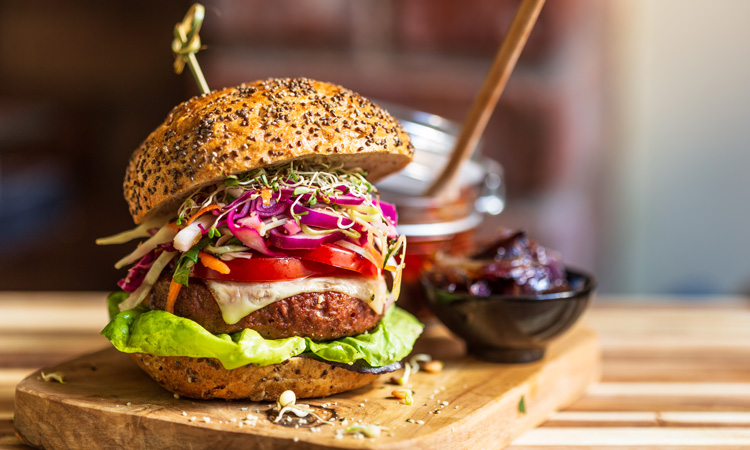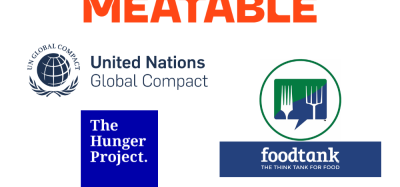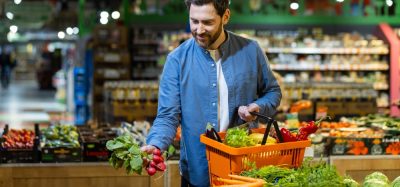The rise of the meat-mimicking market
- Like
- Digg
- Del
- Tumblr
- VKontakte
- Buffer
- Love This
- Odnoklassniki
- Meneame
- Blogger
- Amazon
- Yahoo Mail
- Gmail
- AOL
- Newsvine
- HackerNews
- Evernote
- MySpace
- Mail.ru
- Viadeo
- Line
- Comments
- Yummly
- SMS
- Viber
- Telegram
- Subscribe
- Skype
- Facebook Messenger
- Kakao
- LiveJournal
- Yammer
- Edgar
- Fintel
- Mix
- Instapaper
- Copy Link
Posted: 10 December 2019 | Sam Mehmet (New Food) | No comments yet
To gain an understanding of how and why the meat-mimicking market is predicted to continue to grow, New Food’s Sam Mehmet spoke with Naked Glory’s Alison Lees about the rise of the flexitarian and plant-based movements.


Consumers on a global scale are seeing more meat alternatives appearing in their supermarkets, but in a world where vegetarianism, veganism and flexitarianism are growing in popularity, these products still often mimic the texture, appearance and taste of meat. Alison Lees, Marketing Manager of Naked Glory, Kerry Food’s plant-based range, discusses how consumer trends and habits are driving the meat-free market, as well as what the future may hold for consumers and industry alike.
Q: In your opinion, what do you think has driven the recent flexitarian movement?
A: Our research has uncovered that health is the number one driver for people cutting down on meat; number two, is sustainability. What we are seeing within that are often discrete trends. In terms of sustainability, it has a much younger demographic with a lot of people who are very aware of climate change. There is a lot of noise going on in the world about that at the moment, whether that is through the media, or figureheads such as David Attenborough or Greta Thunberg. Another trend is within the more mature market, the 40-year-old bullseye consumer who is looking to cut down on meat, particularly processed meat, from a dietary health perspective.
Q: Why do you think so many manufacturers and retailers are developing plant-based foods which mimic meat?
A: Through our research we have been able to segment the market into two sections. Of all the meat alternatives that are available in the market, 75 percent of the value sales currently go to products that actively mimic meat, and 25 percent go to products that are very much vegetable-based, such as cauliflower, beans or nuts.
Naked Glory has labelled these two sections ‘veggie lovers’ and ‘meat lovers’. For the meat lovers, they typically do not want to give up the taste of meat, the texture of meat or the succulence of meat – they just want to be healthy. So, the fact that they still want a great tasting product means that actually offering them a solution which mimics meat is going to be entirely appropriate for them, slotting into their existing lifestyle. If you are a consumer that has been eating meat all your life and you cook spaghetti Bolognese, or toad in the hole, it is very easy to see how you would immediately switch a meat-free sausage into that meal, or a meat-free mince.
For the meat lovers, they typically do not want to give up the taste of meat, the texture of meat or the succulence of meat – they just want to be healthy.
Our research has also shown that with vegetable-based dishes, people are a little bit baffled; they generally do not know where to start. One of the factors that consumers noted was the fact that peeling and preparing vegetables often takes up time, and that vegetables do not offer the same textural bite.
If we consider beans as an example, they are generally quite mushy in texture, so somebody who has been used to eating beef might consider it as a leap too far. It might be too much of a change that it ends up feeling like a compromise. That is why the meat-mimicking, or meat analogue as it is traditionally called, is the section of the market which is gaining most traction. Consumers inherently just want ease and convenience.
I think one other important thing to highlight is that when constructing a meat-free meal that is based on vegetables, you do not necessarily know that you are getting the right protein levels that you would do if you had a chicken filet or a steak. Inherently, people know that meat contains protein, and that is another benefit of these meat-mimicking products; the Naked Glory range is all high in protein, so consumers do not actually have to worry about their nutritional intake quite as much.
Q: What are the main ingredients and techniques that are used in meat-mimicking products?
A: If we were to do a survey of the amount of meatless products that are out there at the moment, soya would be the most common. This is because soya has a texture that gives a ‘bite’, and also succulence. Soya is, in its base form, relatively flavour-free, which allows us to add lots of seasonings and flavourings to give it that meaty kind of taste. It also has huge nutritional benefits because it is a lower fat option. Soybeans are known for being low in saturated fat, and they have all of these great properties, along with a lower environmental impact.
Soybeans are known for being low in saturated fat, and they have all of these great properties, along with a lower environmental impact.
There are also other sources of protein that have come into the market more recently and are becoming more mainstream. Pea protein is one we have looked at ourselves, and it is potentially something that we might consider in the future. One of the downsides with pea protein, however, is that it has a slightly stronger taste to it, so you have to counteract that with quite a bit more work within the recipe to take that negative taste out of the equation.
Q: How is current political uncertainty and questions about the future of trade, affecting the ingredient supply chain for alternative meat?
A: Obviously we have supply agreements with the suppliers for soy, but there is definitely a lot of noise around the availability of soy. With plant-based protein growing so massively, is there going to be enough soy left in the world to keep producing these products? We have got specialist procurement experts who will be monitoring this on a week-by-week basis, who will be ensuring that we have got the right level of supply out there to meet our growing forecasts. Because we are part of Kerry Group, which is a global organisation, we fortunately benefit from their scale.
Q: There has been a lot of debate about people cutting down on meat – red meat specifically – for both environmental and health benefits. What is your opinion on this?
A: The World Health Organization (WHO) has stated that there are several red meat items which cause cancer, all that information is out there in the public domain. Processed meats like bacon, ham, salamis and those kinds of continental meats have been called out as bad for you by WHO, and Cancer Research UK has been amplifying that message as well, so there is no disputing that.
It is clear to us that consumers are better informed than they ever have been about the impact of meat on their diet, and I think this is why people are looking to either reduce the amount of meat that they eat; either through reducing the frequency of meat that they eat throughout the week or the portion sizes. For people that still want to eat red meat, they could choose a smaller cut, and maybe opt for a higher quality-sourced ingredients, from a local butcher perhaps.
As a brand, Naked Glory is not here to preach to anybody – it is here to supply choice to the market. In the past, if consumers had been aware of the health benefits of plant-based alternatives, they would have found themselves lost because they would have got to the supermarkets and found a really poor choice of products. Even going back to just two years ago, there were significantly fewer products on the market, and what was on the market did not deliver in terms of the taste and texture that meat eaters were accustomed to.
Q: What do you see the future holding for the plant-based movement?
A: I think the market is going to continue to grow massively. The trends that we are seeing – that we have seen over the past year – will be amplified even further in 2020. The number of people who have signed up to Veganuary has grown year-on-year and I think it will only continue to do so.
Although that is a very small number of people, the media noise around it and the ripples that it creates in society as a whole has been massive. You have only got to look at the likes of Greggs’ vegan sausage roll and the amount of media attention that it created, seeing that year-on-year, means the market is just going to grow. Also, the noise around vegan diets and how good they are for your health, the planet and animal welfare will also continue.
It is clear to us that consumers are better informed than they ever have been about the impact of meat on their diet, and I think this is why people are looking to reduce the amount of meat that they eat,
There are lots of longer-term predictions out there and interesting spaces that other companies are looking at. For example, lab grown meat is something that is gathering pace, particularly in the US, where you have lots of high-profile celebrity investors in lab grown meat companies.
I also think that alternative sources of protein, such as insects, will become a larger part of our everyday lives. Although this could be argued not to be meat-free as such, it is a sustainable protein that is one to watch.
In my opinion, the ‘meat and two veg’ concept will disappear in the future, and the proportion of veg-based meals in any given consumer’s diet will continue to increase at the expense of meat reducing down.
There have been talks that there will be a government meat tax levied, in the same way they have done with sugars in soft drinks – so that’s one to watch out for! If consumers have to pay more for their meat, will that tip the favour in terms of plant meat-based foods even more? Who knows….
Biography


Before joining Kerry Foods, Alison held a variety of roles at leading food manufacturers including Tate & Lyle, Nestlé and Ferrero.
Related topics
Cultured Meat, Free From, Health & Nutrition, Plant based, Proteins & alternative proteins, The consumer









